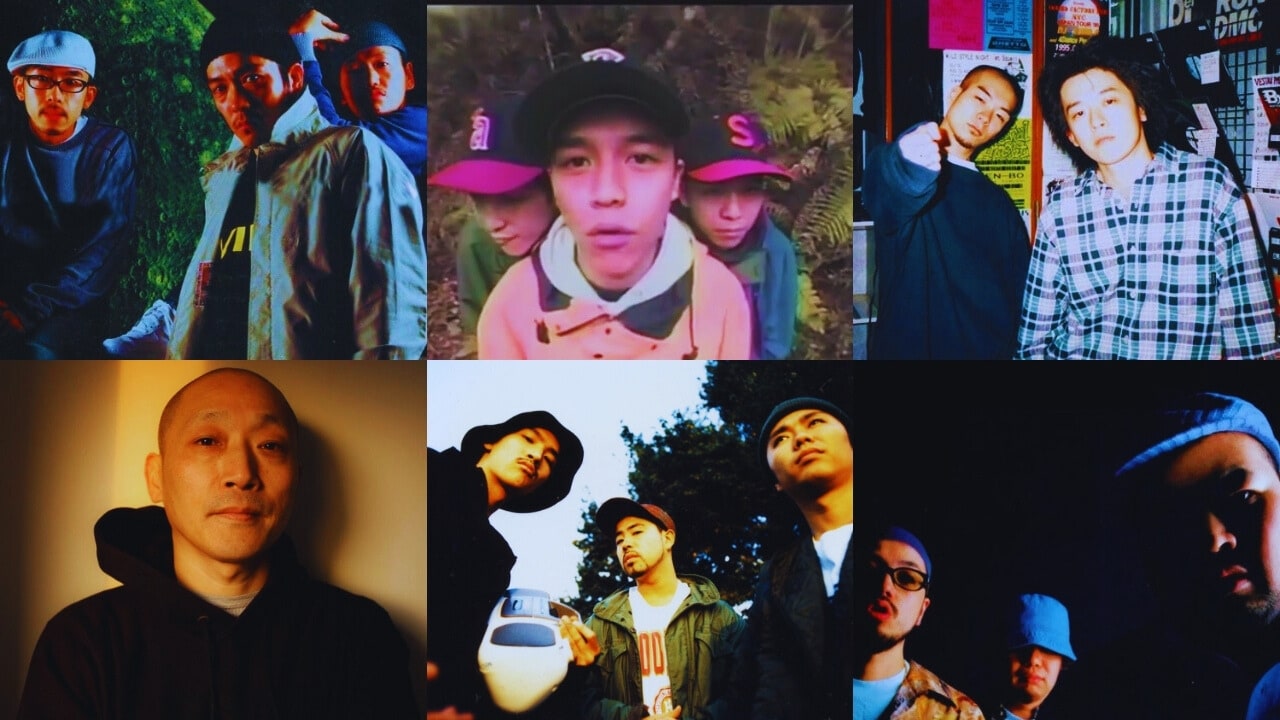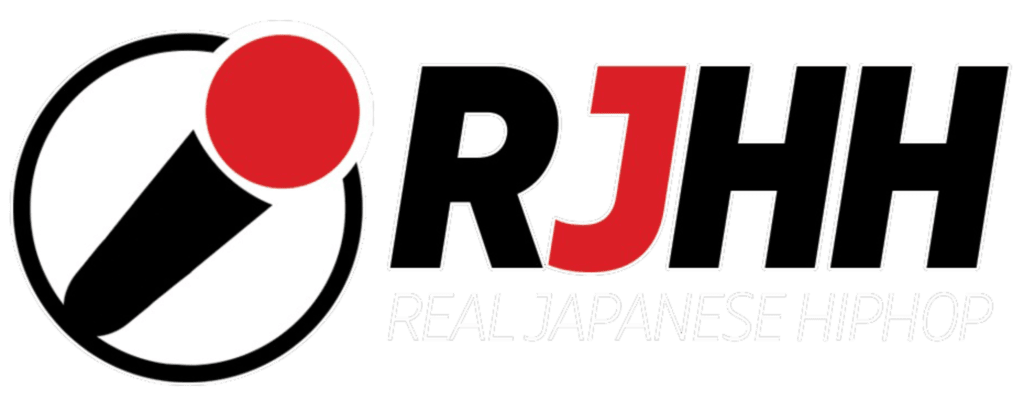July 23, 2020 | by Attango
During the 80s, hip-hop experienced growing popularity, emerging as a powerful and influential cultural movement. Innovative artists like Grandmaster Flash, Run-DMC, and Public Enemy laid the foundations for this energetic and socially engaged music genre. As hip-hop culture took root in various cities across the United States and the world, Japan was no exception. In a previous article, we highlighted the Japanese pioneers who imported hip-hop culture to the archipelago in the early ’80s. Among them, Hiroshi Fujiwara (藤原ヒロシ), Toshio Nakanishi (中西 俊夫), and DJ Yutaka (ディージェイ・ユタカ) discovered hip-hop culture in New York around 1982 and played a significant role in introducing this urban culture to Japan. Their contributions remained vital throughout the ’90s, as they continued to be essential figures in the Japanese hip-hop scene.
However, the dissemination of hip-hop in Japan was not merely a cultural import. Rappers like Ito Seiko (いとう せいこう) and Chikida Haruo (also known as President BPM) made significant improvements to Japanese-language rap techniques. Their creativity helped establish a unique identity for Japanese rap, skillfully merging international influences with local cultural elements. For the Japanese youth eager to explore and better understand this flourishing culture, memorable events marked the 80s. Promoting the film “WILD STYLE TOUR” in 1983 (featuring artists who participated in the film produced by Charlie Ahearn) paved the way for greater exposure to hip-hop culture in the country. Similarly, the RUN-DMC concert in 1986 sparked the interest of an increasingly hip-hop-hungry Japanese audience. The creation of the label MAJOR FORCE also played an essential role in contributing to the emergence and promotion of local talent. This label opened new perspectives by releasing the first albums of Tiny Panx, Scha Dara Parr (スチャダラパー), ECD, The Orchids, Tycoon To$h, Terminator Troops, and many other artists. It greatly contributed to the recognition and growth of Japanese rap on the global stage.
In this article, we will now shift our focus to the rappers who left their mark in the ’90s, the Sanpin CAM (さんぴんCAM) and B-BOY Park festivals, as well as the first television shows dedicated to hip-hop. This decade was marked by creative explosions and style diversification, leading to the rise of popular rappers who left an indelible mark. Join us on a captivating journey into the fascinating world of Japanese rap in the ’90s and discover the artists who shaped this pivotal period in Japan’s musical history.
Japanese rap is deeply rooted in the legacy of Hip-Hop
Since its modest beginnings in the 1980s, Japanese rap has come a long way to become one of Asia’s most innovative and captivating hip-hop music scenes. Pioneers played a fundamental role in introducing hip-hop culture to Japan, paving the way for the rap boom in the 1990s. With its rich cultural history and unique language from their homeland, Japanese rappers embraced the challenge of creating their own identity while staying true to the roots of American hip-hop. In this context, Ito Seiko and Chikida Haruo (known as President BPM), aware of the growing culture in the United States, emerged as true revolutionaries of Japanese rap. They brought a touch of originality by rethinking rap techniques and pushing established boundaries.
See also: History of Japanese Rap ~ Part 3: Japanese Hip-Hop in the 80s
One striking feature of Japanese rap is its ability to juggle with linguistic constraints. Unlike English, where the rhyme structure is relatively flexible, Japanese verbs typically come at the end of sentences, thus restricting rhyme possibilities. Nevertheless, the first and second generations of Japanese MCs embraced these challenges with creativity. They adopted an innovative approach by using abbreviated verbs and accented syllables to create catchy and flowing rhymes. At times, a few English words were integrated into their lyrics, reinforcing the connection between black American hip-hop culture and their Japanese identity. This unique combination of rhythms and sounds broke the conventions of traditional Japanese poetry, which typically relies on the number of syllables rather than rhyme structure. The modernization of Japanese rap transcended cultural boundaries, attracting more amateur rappers who marveled at this harmonious fusion of tradition and modernity. The ability of Japanese rappers to innovate despite linguistic constraints gave birth to a distinctive rap style.
The compilation “Yellow Rap Culture In Your House” impacts Japanese rap
Between 1988 and 1990, three albums would prove crucial for the second generation of rappers, contributing to firmly implant rap in Japan. Two of these albums were released under the iconic MAJOR FORCE label: “Pico Curie” by rapper ECD, released in 1989, and a year later, “Operation Scha Dara Parr” by the group Scha Dara Parr (SDP). In the same year, the still nascent J-RAP scene was marked by the undoubtedly revolutionary release of the vinyl album “Yellow Rap Culture In Your House” under the Wax Plate Records label. This twelve-inch compilation consists of four singles (“Do Da Do“, “K.P“, “Now Iz When We Must Decide“, and “Let’s Gathering“). It was quickly recognized as the most significant rap work of its time. The combination of talents from Krush Posse (Dj Krush‘s first rap group with DJ GO and Muro), rappers Gutch Dee, Home Boys, and Honey Bomb brought unprecedented freshness to the Japanese rap scene.

Yellow Rap Culture in Your House, SDP, Pico Curie
The impact of “Yellow Rap Culture In Your House” on the development of Japanese rap in the 1990s was colossal. By bringing innovative sounds and unprecedented rap techniques, the next generations of rappers would draw inspiration from this compilation and explore other creative horizons. Following the release of this revolutionary album, a wave of new rap groups emerged on the Japanese scene. Among them were iconic names such as RHYMESTER, MICROPHONE PAGER, BUDDHA BRAND, LAMP EYE, SOUL SCREAM, SHAKKAZOMBIE, SOUL SCREAM, KIMIDORI, GAGLE, and many others. These rappers solidified Japanese rap throughout the archipelago and created many of the most iconic Japanese rap songs, which remain popular today. Tracks like “口から出まかせ” by Rhymester, “Hachi To Cho” by Soulscream, “Rapperz Are Danger” by Microphone Pager, “虹” by Shakkazombie, “Summer Jam 95” by Scha Darr Parr, “Shogen” by Lamp Eye, and “Ningen Hatsudensho” by Buddha Brand left a mark on a generation and contributed to the evolution of Japanese rap as a unique artistic expression, skillfully blending international influences with Japanese culture and identity.
“DA.YO.NE” by EAST END x YURI: The Milestone Single in Japanese hip-hop History
The year 1994 marked a significant moment in Japanese rap history with the group EAST END x YURI and their single “DA.YO.NE.” This pop-rap track quickly captured the airwaves and opened new doors for the musical genre in Japan while sparking passionate debates about rap’s popular direction. The EAST END group was already well-known in the J-rap scene at the time, consisting of three high school friends: Gaku, Yoggy, and Rock-Tee. With the addition of Yuri Ishii, a former Japanese idol from Tokyo Performance Doll, the synergy among the members was evident from the start. They collaborated to create the single “DA.YO.NE“, featured in the EP titled “Denim-ed Soul“, which sampled the famous melody from George Benson’s “Turn Your Love Around“.

EAST END X YURI – demi-ed soul
What set “DA.YO.NE” apart from other tracks of its time was its lyrical content. The song stood out by refusing to address themes like sex, drugs, alcohol, or deep social issues, which were common among other rappers. Instead, the lyrics conveyed a message of positivity, hanging out with friends, and romantic encounters. This accessible approach contributed to its appeal to a wide audience. Indeed, “DA.YO.NE” quickly became a sensation and a huge commercial success. The instant triumph propelled the group to phenomenal popularity overnight, making it the first Japanese rap single to reach a million sales. However, this immense success also sparked debates within the 90s J-rap scene. Some genre purists criticized the pop-rap direction taken by EAST END x YURI, believing that it veered Japanese rap away from its roots and authenticity. They considered the predominance of sometimes highly commercial sounds as making the artists less credible.
The Expansion of hip-hop in Japan with Sanpin CAMP, Riko Sakurai, and B-BOY Park
The Sanpin CAMP (さんぴんキャンプ), held on July 7, 1996, at the prestigious Hibiya Open Air Concert Hall, was a major hip-hop gathering and another key milestone in the expansion of hip-hop throughout the Japanese archipelago. The initiative to launch this event came from the rapper ECD, who successfully brought together the most popular rappers from the Japanese hip-hop scene onto one stage. YOU THE ROCK★, ECD himself, RHYMESTER, MICROPHONE PAGER, LAMP EYE, SOUL SCREAM, SHAKKAZOMBIE, MURO, and other iconic figures were present. Never before had such a gathering of hip-hop artists taken place, making Sanpin CAMP a historic moment in Japanese rap history. Before this event, Japanese hip-hop was still developing, with some radio shows and specialized magazines already existing. In 1995, rapper YOU THE ROCK★ launched his radio show “Hip Hop Night Flight“. In 1994, the first issue of the magazine FRONT dedicated to hip-hop was released. However, it was from Sanpin CAMP that the media exposure of hip-hop in Japan gained momentum, and the rappers took various actions to promote their culture through their music.
See also: History of Japanese Rap ~ Episode 1: 12 classic albums revisited
The snowball effect was felt the following year, with the emergence of new record labels and new radio shows created by several artists. Among the most popular were “HIP HOP JOURNEY DA CYPHER” broadcasted on J-WAVE radio and MTV JAM on the public NHK tv channel. Riko Sakurai hosted both shows. By providing a platform for Japanese rappers and DJs to showcase their sets and also highlighting American rap stars from the 90s, Riko Sakurai became the first journalist to dedicate several years to hosting essential hip-hop programs.
Another annual hip-hop highlight in Tokyo was the B-BOY Park, held at Yoyogi Park, created by the visionaries Creazy-A and Dj Yutaka in 1997. For two decades, it brought together enthusiasts and numerous artists. Unlike other events like Sanpin CAMP, B-BOY Park was not limited to rap performances on stage. This festival offered a complete experience, including dance, MC, and DJ battles. These gatherings were eagerly anticipated by fans and enthusiasts eager to see the artists in action. It led to moments of pure talent and communion between the artists and their audience, further strengthening the spirit of hip-hop culture. Over the years, B-BOY Park was a platform to showcase emerging new millennium artists. They brought their personal touch while respecting the deep influences passed down by their predecessors from the 80s and 90s. This assured the continuous evolution of the Japanese hip-hop scene into the 2000s.
Japanese rap has come an incredible way since its beginnings in the 80s and early 90s. It has evolved to become one of the most innovative and captivating hip-hop scenes in Asia. Thanks to certain key players, specific musical productions, and two decisive events, hip-hop culture has taken root in Japan. The 90s were marked by a creative explosion and diversification of styles, leading to the emergence of popular rappers who left a lasting mark on Japan’s musical history.
BONUS VIDEO

History of Japanese Rap ~ Part 1: 12 classic albums revisited









An article that reminds me of the golden age of Japanese rap, merci ATTANGO